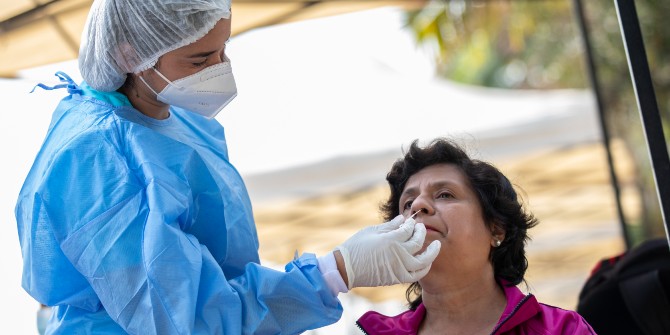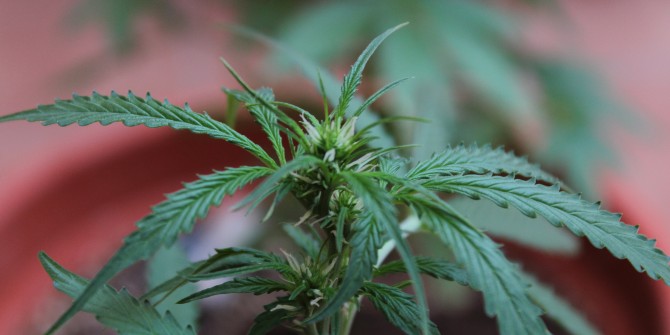Christopher Murray (University of Washington) looks at the mistakes made during the pandemic and how its ramifications will play out in the coming years.
As the pandemic has progressed, we have learnt that the risk of serious illness and death from COVID-19 is dramatically age-related. A 100 year-old is 10,000 times more likely to die than a 10 year-old. The risk of death goes up much more steeply for COVID (10 percent per year of age) than it does for mortality on average (4 percent). Globally, research I have co-authored in The Lancet estimates that there have been about 17.9 million deaths from COVID. This is approximately a 20 percent increase in global mortality during 2020 and 2021.
Some of the highest death rates were in Latin America, particularly Peru, Bolivia, Ecuador, and some Mexican states. Russia and a few eastern European countries also experienced high rates. At the other end of the scale, parts of south-east Asia, Australia, New Zealand and Norway have done quite well, as has Canada. Countries in the same economic zone have had markedly different results in terms of protection people against COVID.
Since we know age is such a dominant risk factor, we also looked at the age-standardised excess death rate — where a very different pattern emerges. Many parts of Europe have done rather well, as have Canada and Sri Lanka. Most of sub-Saharan Africa and Latin America have done badly. Indeed, once you control for age, COVID is not markedly different from almost any other aspect of global health.
What went wrong?
The global health community was incredibly slow to react to COVID. By 12-13 December 2019, conversations emerging on social media in China revealed that something unusual was happening. From 15 December, China censored that commentary. So the early signals were there — if we had been alert to them. The real problem started on 5 January, when the Chinese virologist Zhang Yongzhen sequenced the coronavirus and wrote to the Chinese National Health Commission to advise precautionary measures. Even as the BBC was broadcasting footage of people in hazmat suits in Wuhan, and when the city was locked down on 23 January, the World Health Organization committee decided there was insufficient evidence to declare a public health emergency. They wanted 100 percent proof of human-to-human transmission.
These decisions were not taken on the basis of a cost-benefit analysis, but on the idea that governments had to be completely certain of how the virus behaved before taking any action. In fact, even though my team at the University of Washington and Seattle had developed a test for COVID by mid-January, the Centers for Disease Control and Prevention and Food and Drug Administration actively suppressed the measurement of COVID and initially threatened us with legal action if we used the test on any individuals. If we had been able to deploy it earlier we would have known about community transition in the US weeks and weeks before it had spread widely.
Surveillance has been extremely inadequate
So why do people delay, and choose a ‘wait and see’ strategy? (We saw it again in the Delta wave, when people waited for the variant to arrive in their country before getting ready for the absolutely inevitable.) There are two explanations. Firstly, when the authorities took action to combat swine flu and H5N1, they were criticised for over-reacting. Secondly, the authorities believed that non-pharmaceutical interventions (NPIs), such as masks, screening travellers and lockdowns, would be ineffective. We looked for whether specific NPIs led to reductions in transmission — which is difficult to do, partly because case counts do not equal infections — and found that stay-at-home orders and restrictions on gatherings have quite substantial effects, as do dining and bar closures. In some areas, closing non-essential retail had an effect. We saw very different patterns for school closures, which could be due to the nature of transmission around schools, such as how children travel to get there and how parents pick them up. These vary enormously across societies, so perhaps it is not surprising that the results were different.
Governments hugely overestimated the cost of a false positive test and massively underestimated the costs of inaction. Testing was not suppressed because people were trying to be malicious, but because they worried the public would panic at a false positive test. Soberingly, a new analysis in The Lancet shows that measures of pandemic preparedness did not predict either the number of infections or fatality rates in a country. Countries with higher corruption did have more transmission. Similarly, trust in government and interpersonal trust turn out to be the only compelling predictors of performance. Higher trust led to better vaccination rates and adherence to government recommendations for behaviour. In other words, something that we did not really think about in the context of a pandemic turned out to be a major predictor of performance.
Perhaps the biggest mistake was to assume that vaccination would control the number of infections
Surveillance has been extremely inadequate, which has confounded our ability to understand what is going on and to keep ahead of new variants as they emerge. Genomic surveillance is great in the UK, but pretty much nowhere else. The infection detection rate varies from 0.1 percent in some African countries to 70 percent in parts of western Europe. We know this by comparing seroprevalence data. Hospital admissions data is a useful source, as it reveals the number of severe cases, but in many countries it is not available. Recently, however, with the prevalence of Omicron so high, we have had difficulty distinguishing between people coming to hospital because of COVID or just with COVID.
Perhaps the biggest mistake was to assume that vaccination would control the number of infections. The idea that it would lead to herd immunity was wrong. It has become progressively clearer that vaccines are less effective at blocking infection than severe disease. Yet the US banked heavily on it, and we now see a huge backlash from the public, who point out that they were told the pandemic would be over if they got vaccinated. It was also the justification for many vaccine mandates.
COVID in 2022 and beyond
By March 2022, less than 5 percent of the population had never caught COVID or been vaccinated against it. Omicron is markedly more infectious than Delta, but 78 to 85 percent of cases are mild or asymptomatic and hospitalisations are far lower than during earlier waves. It has spread rapidly across the world, with the first Omicron peaks only 20-25 days after the exponential rise in cases. Over a five-week period 70 percent of Indians were infected with the variant. This puts pressure on hospitals not just through COVID admissions, but staff absences.

We also know that vaccine effectiveness against Omicron infection wanes very quickly. After 20 weeks it is only 10 to 15 percent effective. If you survive infection, you end up with immunity that wanes more slowly than vaccination, and is at least as good as (if not better) than the vaccine.
New variants will emerge, but the combination of enhanced immunity, ongoing vaccination, the availability of anti-virals and the knowledge that the vulnerable can protect themselves through high-quality masks and social distancing mean that further government restrictions are unlikely. COVID will become a disease that health systems need to manage on an ongoing basis, like a bad seasonal flu.
Perhaps the most lasting impact of the pandemic will be the effect of lost schooling. In many countries, including India, schools were shut for two years. Will these students catch up, or will this experience turn into a permanent reduction in human capital for these cohorts? Will the girls who have dropped out ever go back to school?
COVID may accelerate the marked declines in fertility in recent years. These began to fall after around 2010 in the US and 2015 in Western Europe. Even in China, which had a brief surge after ending its one-child policy, fertility gone down again. How do you protect women’s rights when governments are starting to be very concerned about the economic effects of low fertility?
An emerging narrative claims that the public were misled about the dangers of COVID, the promise of vaccination and the efficacy of masks
I fear we may see a backlash against public health. After two years of on-off lockdowns, trust in government is declining, and an emerging narrative claims that the public were misled about the dangers of COVID, the promise of vaccination and the efficacy of masks.
We need to bolster efforts to strengthen the UN, with independent monitoring of global health threats. Putting all our eggs in one basket is too great a risk: we need multiple actors reporting on data and potential risks. The importance of hospitals may be recognised again, as basic therapies like oxygen turn out to be very important. But governments are not going to sustain the levels of health spending that we have seen during the pandemic, and there will be fierce competition for funds to tackle non-communicable diseases, the effects of climate change, and antibiotic-resistant infections.
This post represents the views of the author and not the COVID-19 blog, nor LSE. It is based on Christopher Murray’s lecture at an LSE event, The Impact of COVID-19 on Global Health.






COVID-19 has exposed the fragile health systems preparedness to response pandemic like situation and low-income countries has lessons learned fortunately the caseload not to fatal but this resilience didn’t actually mean that ‘Act of God’ will not save them ultimately again. Interestingly, Public Health and Disaster has no integration rather it shaped-up with other natural and man-made disasters so disaster management and preparedness needs to rethink how best LMICs can response with better health systems management through health systems strengthening …I mean it means it’s better late than never.